Themed collection Journal of Materials Chemistry A Emerging Investigators

Contributors to the Journal of Materials Chemistry A Emerging Investigators 2023 collection
Journal of Materials Chemistry A profiles contributors to the Emerging Investigators collection.

J. Mater. Chem. A, 2023,11, 20349-20367
https://doi.org/10.1039/D3TA90182C
Sustainable stretchable batteries for next-generation wearables
Stretchable battery technology still faces several challenges to progress the development of next-generation wearables. This perspective will evaluate current strategies and provide a discussion on possible avenues for future research.

J. Mater. Chem. A, 2023,11, 22718-22736
https://doi.org/10.1039/D3TA03482H
Ion transport and conduction in metal–organic framework glasses
This perspective highlights an emerging class of metal–organic frameworks (MOFs) with glass transition. They offer advantages like isotropic conduction, absence of grain boundaries, and high moldability, making them promising ion conductors for use in electrochemical and energy related systems.

J. Mater. Chem. A, 2023,11, 20302-20314
https://doi.org/10.1039/D3TA03192F
Efficient electrochemical upgradation strategies for the biomass derivative furfural
This review interprets the electro-oxidation/reduction and paired electrochemical reactions of furfural from the perspective of energy optimization, with a focus on the study of electrocatalysts, mechanisms, and reactors.
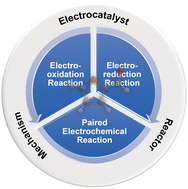
J. Mater. Chem. A, 2023,11, 23133-23147
https://doi.org/10.1039/D3TA03813K
Liquid interfaces: an emerging platform for energy conversion and harvesting
Liquid interfaces are versatile platforms to enable both chemical and physical reactions, which offers great opportunities to realize energy conversion and harvesting, thus providing more opportunities for obtaining clean energy.
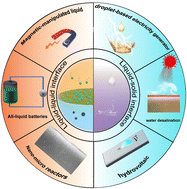
J. Mater. Chem. A, 2023,11, 21009-21028
https://doi.org/10.1039/D3TA03760F
Recent advances in two-dimensional nanomaterials as bifunctional electrocatalysts for full water splitting
Recent advances in two-dimensional bifunctional electrocatalysts for full water splitting are systematically reviewed, discussing challenges and opportunities for further research.

J. Mater. Chem. A, 2023,11, 18502-18529
https://doi.org/10.1039/D3TA02293E
Thermodynamics of calcined clays used in cementitious binders: origin to service life considerations
The use of modeling tools can signifcantly speed up the adoption of sustainable construction materials.

J. Mater. Chem. A, 2023,11, 17920-17937
https://doi.org/10.1039/D3TA01896B
Hybrid water electrolysis with integrated and cascading reactions using two-dimensional electrocatalysts
Hybrid water electrolysis using 2D electrocatalysts is a promising way to reduce the cost of green hydrogen production. This review systematically assesses the status quo and future challenges of various 2D materials for different reactions.

J. Mater. Chem. A, 2023,11, 16433-16457
https://doi.org/10.1039/D3TA01931D
Recent progress in nonflammable electrolytes and cell design for safe Li-ion batteries
Improving the safety of high-energy-density lithium-ion batteries requires the development of understanding of the mechanism, the assessment matrix and the strategies of nonflammable components.

J. Mater. Chem. A, 2023,11, 15576-15599
https://doi.org/10.1039/D3TA01951A
Recent progress and prospects in active anion-bearing C12A7-mediated chemical reactions
Various active ions substituted C12A7 correspond to different chemical application.

J. Mater. Chem. A, 2023,11, 15074-15099
https://doi.org/10.1039/D3TA02422A
Self-supporting metal–organic framework-based hydrogen and oxygen electrocatalysts
This article reviews the recent development of self-supporting metal–organic framework-based hydrogen and oxygen electrocatalysts with a focus on the synthesis strategy and application, and concluding with some current challenges and future perspectives.
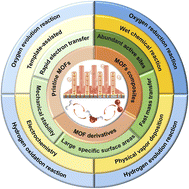
J. Mater. Chem. A, 2023,11, 13089-13106
https://doi.org/10.1039/D3TA01903A
Opportunities and challenges of zinc anodes in rechargeable aqueous batteries
This review summarizes the fundamental understanding of issues and strategies on the zinc anode. The electrolyte engineering is discussed. Techniques applied on analysing the interaction between anodes and electrolytes are summarized.

J. Mater. Chem. A, 2023,11, 11987-12001
https://doi.org/10.1039/D3TA01904G
Constant-potential molecular dynamics simulation and its application in rechargeable batteries
Molecular dynamics reveals structures, properties, and reactions at battery interfaces on the atomic scale. Imposing a constant electrode potential in the simulation brings the model one step closer to physical reality and battery working conditions.
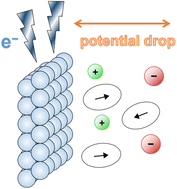
J. Mater. Chem. A, 2023,11, 11078-11088
https://doi.org/10.1039/D3TA01411H
The journey of iron-based electrocatalytic materials for nitrogen reduction reaction: from current status to future prospects
This review summarizes recent advances, presents the structure engineering strategies, and focuses on the mechanism disclosure and structure–property relationship and provides future challenge and prospect of various iron-based materials towards N2-to-NH3 electrocatalysis.

J. Mater. Chem. A, 2023,11, 11048-11077
https://doi.org/10.1039/D3TA01548C
Interphases in aqueous rechargeable zinc metal batteries
The review describes the progress of research on the aqueous interphases within rechargeable zinc metal batteries.

J. Mater. Chem. A, 2023,11, 8470-8496
https://doi.org/10.1039/D3TA00254C
Hybrid solid electrolyte-liquid electrolyte systems for (almost) solid-state batteries: Why, how, and where to?
Combining solid electrolytes (SE) and liquid electrolytes (LE) may resolve interparticle contact issues in solid-state batteries. New challenges arise due SLEI, which needs to be better understood to minimize its effects at the cell-level.

J. Mater. Chem. A, 2023,11, 1083-1097
https://doi.org/10.1039/D2TA02179J
Amphoteric metal–organic framework subnanochannels with pH-tuneable cation and anion sieving properties
UiO-66-type amphoteric metal–organic frameworks (MOFs) containing both amino and carboxylic groups are synthesized and grown within PET subnanochannels to investigate the influence of functional groups on the cation/anion ion transport properties.

J. Mater. Chem. A, 2023,11, 13223-13230
https://doi.org/10.1039/D3TA01901B
Unravelling the CO2 capture and conversion mechanism of a NiRu–Na2O switchable dual-function material in various CO2 utilisation reactions
The mechanism of a NiRuNa/CeAl dual function material in successive cycles of CO2 capture and conversion was investigated. Carbonyls and carbonates were formed during CO2 capture, and a spillover mechanism occurred to form the desired products.
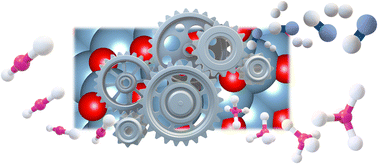
J. Mater. Chem. A, 2023,11, 13209-13216
https://doi.org/10.1039/D3TA01892J
Copper–barium-decorated carbon-nanotube composite for electrocatalytic CO2 reduction to C2 products
A copper–barium-decorated carbon nanotube nanocomposite enabled a faradaic efficiency of 71% and partial current density of 355 mA cm−2 at −0.7 V vs. RHE.

J. Mater. Chem. A, 2023,11, 13217-13222
https://doi.org/10.1039/D3TA01912H
Enhancing the cycle-life of initial-anode-free lithium-metal batteries by pre-lithiation in Mn-based Li-rich spinel cathodes
Benefiting from the highly reversible structural evolution of the pre-lithiated Li-rich Li2Mn2O4 cathode, the corresponding anode-free coin cell delivers a considerable 94.4% capacity retention after 40 cycles.

J. Mater. Chem. A, 2023,11, 11119-11125
https://doi.org/10.1039/D3TA01823G
A polythiourea protective layer for stable lithium metal anodes
A stable polythiourea-based organic–inorganic composite film was constructed to form Li3N, Li2S, and LiF in situ at the LMA, endowing excellent stability to Ni-rich Li‖LiNi0.88Co0.09Mn0.03O2 (NCM88) cells.

J. Mater. Chem. A, 2023,11, 10155-10163
https://doi.org/10.1039/D3TA01343J
Low band gap semiconducting covalent organic framework films with enhanced photocatalytic hydrogen evolution
A contrasting photocatalytic mechanism was observed for semiconducting covalent organic frameworks (COFs). J-type aggregation favors exciton migration in the powder state, while charge transport governs the photocatalytic activity in the films.
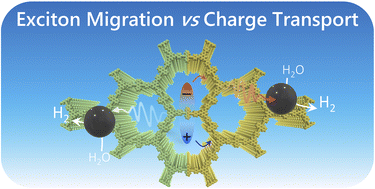
J. Mater. Chem. A, 2024,12, 247-255
https://doi.org/10.1039/D3TA04552H
Covalent modification of surfaces with porous metal–organic materials
Enhancing MOF and PCC tunability: surface attachment explored via click chemistry, alkylation, and electrostatic methods.

J. Mater. Chem. A, 2023,11, 23888-23894
https://doi.org/10.1039/D3TA04662A
Building fast and selective Zn ion channels for highly stable quasi-solid-state Zn-ion batteries
Ordered ion channels constructed by confining a gel electrolyte in intercalated halloysite nanotubes exhibit fast and selective Zn ion transportation and therefore enhance the cycling stability of the quasi-solid-state Zn-ion batteries.
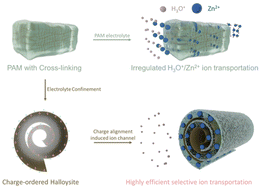
J. Mater. Chem. A, 2023,11, 23881-23887
https://doi.org/10.1039/D3TA02866F
In situ formed copper nanoparticles via strong electronic interaction with organic skeleton for pH-universal electrocatalytic CO2 reduction
Electrochemical CO2 reduction reaction (CO2RR) has mainly been implemented in alkaline and neutral electrolytes. In this work, we report an in situ formed novel organic/inorganic copper hybrid catalyst, which is an efficient catalyst for CO2RR in pH-universal electrolytes.

J. Mater. Chem. A, 2023,11, 22992-23000
https://doi.org/10.1039/D3TA03009A
Floating zone crystal growth, structure, and properties of a cubic Li5.5La3Nb1.5Zr0.5O12 garnet-type lithium-ion conductor
Floating zone growth of a cm-sized solid-state electrolyte single crystal, identification of two distinct Li sites with Laue neutron diffraction, and Li-ion conductivity and migration energy determination by EIS and dielectric measurements.
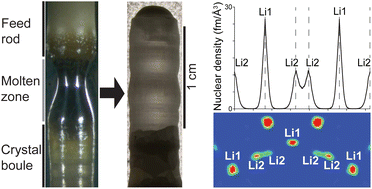
J. Mater. Chem. A, 2023,11, 21754-21766
https://doi.org/10.1039/D3TA04606K
Relativistic electronic structure and photovoltaic performance of K2CsSb
We identify K2CsSb as a potential photovoltaic absorber by considering it's optoelectronic properties and maximum theoretical power conversion efficiency.

J. Mater. Chem. A, 2023,11, 21636-21644
https://doi.org/10.1039/D3TA02061D
Plasmonic polymer nanoantenna arrays for electrically tunable and electrode-free metasurfaces
Electrically tunable and electrode-free metasurfaces using plasmonic polymer inverted nanoantenna arrays can operate across the entire spectral range of the material, including the mid-infrared region.
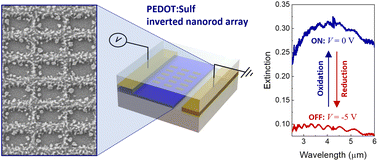
J. Mater. Chem. A, 2023,11, 21569-21576
https://doi.org/10.1039/D3TA03383J
Exploring the impact of lithium halide-based redox mediators in suppressing CO2 evolution in Li–O2 cells
The graphical abstract depicts that the Li–O2 cell failure is directly proportional to CO2 evolution. Cells containing optimal LiBr as redox mediator has significantly suppressed the CO2 evolution upon prolonged Li–O2 cycling.

J. Mater. Chem. A, 2023,11, 20480-20487
https://doi.org/10.1039/D3TA03002D
Single-oxygen linear ether (SOLE) based electrolytes for fast-charging and low-temperature Li-ion batteries
A series of electrolytes based on single-oxygen linear ether (SOLE) open up new avenues for designing novel LIB (Lithium-Ion Battery) electrolytes with improved charging and low-temperature performance.
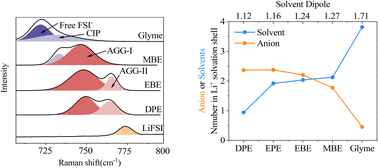
J. Mater. Chem. A, 2023,11, 19996-20010
https://doi.org/10.1039/D3TA01956J
Selection criteria for current collectors for highly efficient anode-free Zn batteries
This work provides comprehensive investigations of reversible zinc metal electrodeposition on various metallic and nonmetallic substrates and describes the main factors influencing the coulombic efficiency of the process.

J. Mater. Chem. A, 2023,11, 19970-19980
https://doi.org/10.1039/D3TA03766E
Synergistic enhancement of hydrogen interactions in palladium–silicon–gold metallic glass with multilayered graphene
Presence of only a few layers of graphene boosts hydrogen intake of Pd-based metallic glass thin films by 2.6 times with 4.5 times higher electrocatalytic hydrogen evolution reaction activity, a tremendous improvement in metal–hydrogen interactions.
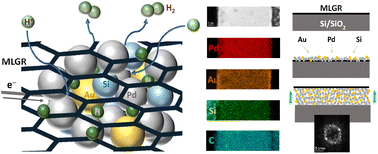
J. Mater. Chem. A, 2023,11, 19396-19407
https://doi.org/10.1039/D3TA01734F
Enabling uniform zinc deposition by zwitterion additives in aqueous zinc metal anodes
This article proposes a new electrolyte engineering strategy with “zwitterion” molecules, which reduce side reactions by adsorbing onto the zinc surface. The 6-aminohexanoic acid enables uniform zinc deposition and reduces zinc dendrite growth.
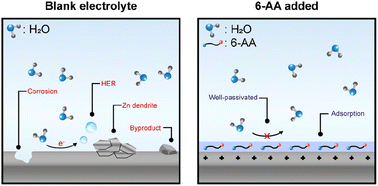
J. Mater. Chem. A, 2023,11, 19384-19395
https://doi.org/10.1039/D3TA01943H
New insights on Fe–N–C catalyst structure from valence-to-core X-ray emission and absorption spectroscopies
Various spectroscopic techniques have been extensively applied, both ex situ and in situ/operando, to study the structure of the Fe–N–C group of catalysts, promising materials for fuel cell applications.

J. Mater. Chem. A, 2023,11, 18862-18871
https://doi.org/10.1039/D3TA02878J
A propanesultone-based polymer electrolyte for high-energy solid-state lithium batteries with lithium-rich layered oxides
A propanesultone-based polymer electrolyte with high ion transference number of ∼0.78 and wide electrochemical stability window of ∼5.0 V has been designed for solid-state lithium batteries with lithium-rich layered oxide cathode materials.

J. Mater. Chem. A, 2023,11, 19118-19127
https://doi.org/10.1039/D3TA01968C
ZIF-8 coating on graphite: a high-rate and long-term cycling anode for sodium-ion capacitors
The ZIF-8 layer is uniformly grown on the graphite surface to promote high-rate and long-term cycling solvated-Na+ co-intercalation reactions in an ether electrolyte.

J. Mater. Chem. A, 2023,11, 18097-18105
https://doi.org/10.1039/D3TA03404F
Reversibility limitations of metal exsolution reactions in niobium and nickel co-doped strontium titanate
![[s with combining breve]](https://www.rsc.org/images/entities/char_0073_0306.gif) ák and Felix Gunkel
ák and Felix Gunkel
Reversible metal exsolution and re-dissolution of metal cations in perovskite host lattices hold the potential for the development of regenerable metal-oxide catalysts. However, the reversibility of metal exsolution reactions is often limited.

J. Mater. Chem. A, 2023,11, 17718-17727
https://doi.org/10.1039/D3TA02927A
ZeoNet: 3D convolutional neural networks for predicting adsorption in nanoporous zeolites
ZeoNet, based on 3D convolutional neural networks and a volumetric distance-grid representation, delivers an exceptional performance in predicting Henry's constants for adsorption of long-chain hydrocarbon molecules in all-silica zeolites.
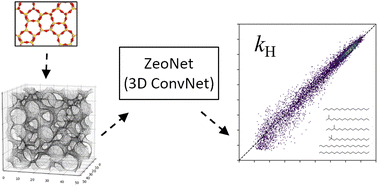
J. Mater. Chem. A, 2023,11, 17570-17580
https://doi.org/10.1039/D3TA01911J
Role of the energy offset in the charge photogeneration and voltage loss of nonfullerene acceptor-based organic solar cells
The quantum yield of long-range spatial dissociation of electron–hole pairs decreased with a decrease in the energy offset between the excited and charge-transfer states, leading to a threshold that can ensure high charge photogeneration efficiency.

J. Mater. Chem. A, 2023,11, 17581-17593
https://doi.org/10.1039/D3TA01928D
Electrochemical lithiation-induced formation of disordered rocksalt
We present here a general crystallographic principle to prepare cation DRX electrode materials via electrochemical lithiation.

J. Mater. Chem. A, 2023,11, 17027-17034
https://doi.org/10.1039/D3TA01740K
Structural evolution during solution-based synthesis of Li7P3S11 solid electrolyte by synchrotron X-ray total scattering
Synchrotron X-ray total scattering and pair distribution function analysis are used to investigate the structural changes during solution synthesis of the Li7P3S11 solid electrolyte.

J. Mater. Chem. A, 2023,11, 17035-17044
https://doi.org/10.1039/D3TA02326E
Hydrolysis-resistant heterogeneous photocatalysts for PET-RAFT polymerization in aqueous environments
This article describes the development of polymer brush-based heterogeneous photocatalysts for PET-RAFT polymerization in aqueous environments.
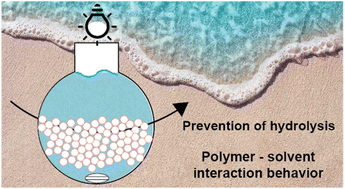
J. Mater. Chem. A, 2023,11, 16616-16625
https://doi.org/10.1039/D3TA02582A
Fundamental insight into enhanced activity of Pd/CeO2 thin films in hydrogen oxidation reaction in alkaline media
In situ electrochemical quartz crystal microbalance (E-QCM) provides new insight into enhanced activity of palladium supported on ceria (Pd/CeO2) in hydrogen oxidation reaction.

J. Mater. Chem. A, 2023,11, 16370-16382
https://doi.org/10.1039/D3TA01879B
Engineering asymmetric multifunctional phase change composites for improved electromagnetic interference shielding and wireless personal thermal therapy
A series of layered asymmetric multifunctional PCCs with MXene layers and phase change layers were fabricated, and the PCCs show great potential in EMI shielding, thermal therapy, and antibacterial applications.

J. Mater. Chem. A, 2023,11, 16138-16152
https://doi.org/10.1039/D3TA03184E
A dual functional molecule for perovskite/P3HT interface to achieve stable perovskite solar cells
An octylammonium azide was introduced to the interface between perovskite and P3HT. The ammonium group could passivate the perovskite defects. The azide moiety could crosslink with P3HT under UV light, strengthening the interfacial contact.

J. Mater. Chem. A, 2023,11, 16363-16369
https://doi.org/10.1039/D3TA01910A
Constructing atomic single metal Co–C3(OH)1 sites with graphdiyne for zinc–air batteries
A Co single-atom catalyst is prepared with novel Co–C3(OH)1 active sites based on graphdiyne, exhibiting excellent activity for the ORR and outstanding performance in a Zn–air battery.

J. Mater. Chem. A, 2023,11, 16172-16179
https://doi.org/10.1039/D3TA02386A
Quinone-functionalised carbons as new materials for electrochemical carbon dioxide capture
A new class of quinone-functionalised carbon materials are shown to capture carbon dioxide through an electrochemical charging process.

J. Mater. Chem. A, 2023,11, 16221-16232
https://doi.org/10.1039/D3TA02213G
Ultralow loading of carbon quantum dots leading to significantly improved breakdown strength and energy density of P(VDF-TrFE-CTFE)
The scheme of the CQD structure and its interaction with the polymer matrix; the comparison between the 0.1 wt% CQD nanocomposite and pristine polymer.

J. Mater. Chem. A, 2023,11, 16127-16137
https://doi.org/10.1039/D3TA02642F
3D printing of solvent-treated PEDOT:PSS inks for electromagnetic interference shielding
Schematic illustration of DIW 3D printing of patterned self-standing polymeric EMI shields.
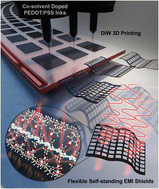
J. Mater. Chem. A, 2023,11, 16027-16038
https://doi.org/10.1039/D3TA01021J
Understanding dehydration of Prussian white: from material to aqueous processed composite electrodes for sodium-ion battery application
Understanding dehydration of Prussian white systems to enable processability of water-based electrodes for sustainable and high capacity sodium-ion batteries.
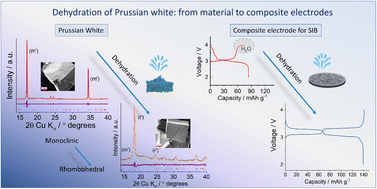
J. Mater. Chem. A, 2023,11, 15778-15791
https://doi.org/10.1039/D3TA02570E
Cationic vacancies accelerate the generation of CoOOH in perovskite hydroxides for the electrooxidation of biomass
SnCo(OH)6 with abundant Sn cation vacancies facilitates the production of deprotonated Co(OH)2 active species and the adsorption of HMF molecules; the onset potential of HMF oxidation is advanced by 200 mV compared to pristine SnCo(OH)6.

J. Mater. Chem. A, 2023,11, 15196-15203
https://doi.org/10.1039/D3TA02813E
Do non-coordinating polymers function as host materials for solid polymer electrolytes? The case of PVdF-HFP
PVdF-HFP does not coordinate to lithium ions, therefore it is a poor polymer host for solvent-free polymer electrolytes.

J. Mater. Chem. A, 2023,11, 15329-15335
https://doi.org/10.1039/D3TA01853A
Metal-support interactions alter the active species on IrOx for electrocatalytic water oxidation
Optimized evolution of active species and facilitated O–O coupling on MnO2 supported IrOx was revealed by in situ spectroscopy.

J. Mater. Chem. A, 2023,11, 15204-15210
https://doi.org/10.1039/D3TA02115G
Dynamic compensation of MnOOH to mitigate the irregular dissolution of MnO2 in rechargeable aqueous Zn/MnO2 batteries
Ce(SO4)2 was introduced as an electrolyte additive for aqueous zinc batteries. The MnOOH generated in situ in the electrolyte was deposited on MnO2 cathodes and compensated for the influence of disproportionation.

J. Mater. Chem. A, 2023,11, 15211-15218
https://doi.org/10.1039/D3TA02202A
Crafting core–shell heterostructures of carbon nanotubes and N,O-coordinated cobalt site-impregnated conjugated porous polymers for highly efficient oxygen reduction
A core–shell heterostructured CNTs/Co–N,O-CP catalyst with well-defined Co–N2O2 active sites was crafted via a viable one-step pyrolysis-free approach for high-efficiency oxygen reduction.

J. Mater. Chem. A, 2023,11, 15311-15318
https://doi.org/10.1039/D3TA02217J
Facile synthesis of cobalt fluoride (CoF2)/multi-walled carbon nanotube (MWCNT) nanocomposites and improvement of their electrochemical performance as cathode materials for Li-ion batteries
Conversion-type metal fluoride cathodes are considered promising candidates for electrochemical applications owing to their large specific capacities and high operating voltages.

J. Mater. Chem. A, 2023,11, 15319-15328
https://doi.org/10.1039/D3TA01918G
Strain relaxation and phase regulation in quasi-2D perovskites for efficient solar cells
By introducing F-PEA as a second spacer cation, a remarkable PCE of 17.17% is achieved for iso-BA based Q-2D PSCs with PTAA as a hole transport layer, attributed to the released tensile strain and improved charge transport in the iso-BA:F-PEA based film.

J. Mater. Chem. A, 2023,11, 15301-15310
https://doi.org/10.1039/D3TA01935G
Liquid metal-based catalysts for the electroreduction of carbon dioxide into solid carbon
An electrocatalyst with trace vanadium alloyed with liquid metal reduces CO2 directly into solid carbon.
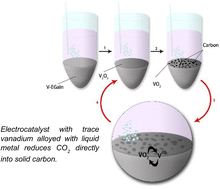
J. Mater. Chem. A, 2023,11, 14990-14996
https://doi.org/10.1039/D3TA01379K
Modulating and optimizing 2D/2D Fe-Ni2P/ZnIn2S4 with S vacancy through surface engineering for efficient photocatalytic H2 evolution
Ultra-thin 2D/2D Fe doped Ni2P modified ZIS with rich S vacancies photocatalyst can effectively improve the photocatalytic hydrogen evolution property.
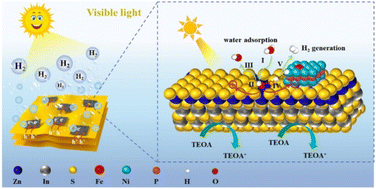
J. Mater. Chem. A, 2023,11, 14809-14818
https://doi.org/10.1039/D3TA02519E
Multi-interfacial engineering of an interlinked Ni2P–MoP heterojunction to modulate the electronic structure for efficient overall water splitting
Multi-interface interlinked, small sized Ni2P-MoP heterojunctions were constructed by employing a Ni-post-modification strategy of POM-based organic hybrid via the linkages of an organic ligand, which achieves highly efficient overall water splitting.

J. Mater. Chem. A, 2023,11, 15033-15043
https://doi.org/10.1039/D3TA01789C
Catalytic conversion of polyethylene into aromatics with Pt/ZSM-5: insights into reaction pathways and rate-controlling step regulation
Pt enhanced aromatization rates of alkenes formed by polyethylene cracking over ZSM-5 acid sites, which contributed to high BTX yield.

J. Mater. Chem. A, 2023,11, 14933-14940
https://doi.org/10.1039/D3TA01917A
Partially H-bonded covalent organic frameworks for photocatalytic hydrogen evolution
Oligo(phenylenevinylene) based covalent organic frameworks (COFs) with different extents of hydrogen bonding were prepared. The effects of the extent of hydrogen bonding of these COFs were evaluated by photocatalytic hydrogen evolution.
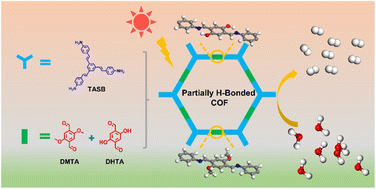
J. Mater. Chem. A, 2023,11, 14760-14767
https://doi.org/10.1039/D3TA01944F
Simultaneous optimization of the electrical and thermal transport properties of LuNiSb via aliovalent doping
With the introduction of Sn or Co into half-Heusler compound LuNiSb, it is discovered that aliovalent doping facilitates the simultaneous optimization of electrical and thermal transport properties.

J. Mater. Chem. A, 2023,11, 14067-14074
https://doi.org/10.1039/D3TA02735J
In situ hierarchical pore engineering in small pore zeolite via methanol-mediated NH4F etching
Hydrolysis-activated in situ pore engineering in zeolites: NH4F in methanol as a deceptively inert agent for a Trojan horse-like introduction and activation.
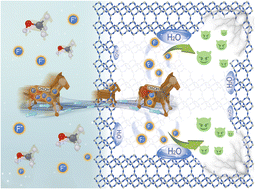
J. Mater. Chem. A, 2023,11, 14058-14066
https://doi.org/10.1039/D3TA01937C
Revealing surface fine structure on PtAu catalysts by an in situ ATR-SEIRAS CO-probe method
An in situ ATR-SEIRAS CO-probe method is used to identify surface active sites and clarify structure–activity relationship of PtAu catalysts via second-derivative spectrum method and Gaussian fitting of infrared spectra of CO oxidation reaction.

J. Mater. Chem. A, 2023,11, 14043-14051
https://doi.org/10.1039/D3TA01668D
Facet-dependent peroxo species regulate product distribution and H2O2 utilization in CeO2-catalyzed aniline oxidation
We showed that the coordination structure of the Ce sites affects the configuration (and reactivity) of the surface peroxo species in H2O2 activation, which determines the product distribution and H2O2 utilization in the aniline oxidation reaction.

J. Mater. Chem. A, 2023,11, 14034-14042
https://doi.org/10.1039/D3TA02486E
Engineering earth-abundant copper(I) sensitizing centers in metal–organic frameworks for efficient photosynthesis
A series of earth-abundant and efficient MOF catalysts were constructed by incorporating Cu(I) complexes with different steric functional groups for boosting photosynthesis.

J. Mater. Chem. A, 2023,11, 14052-14057
https://doi.org/10.1039/D3TA02142D
“Twisted” small molecule donors with enhanced intermolecular interactions in the condensed phase towards efficient and thick-film all-small-molecule organic solar cells
Small molecule donors were designed and synthesized by introducing “twisted” backbones and strongly interacting building units towards high-performance all-small-molecule organic solar cells.

J. Mater. Chem. A, 2023,11, 13984-13993
https://doi.org/10.1039/D3TA01893H
A MOF vertical array enables continuous ion transport pathways with high throughput
A MOF vertical array-based composite solid electrolyte with a bilayer polymer structure was developed to construct continuous ion transport pathways with high throughput and the shortest transport distance, enabling high-voltage Li-metal batteries.
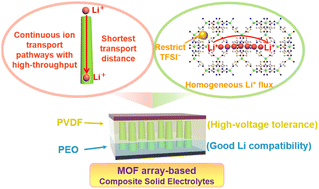
J. Mater. Chem. A, 2023,11, 14025-14033
https://doi.org/10.1039/D3TA01715J
Low-temperature pyrolysis enables FeNi3 nanoparticle implanted N-doped carbon nanosheets as an efficient bifunctional electrocatalyst for overall water splitting
The electrocatalyst FeNi3/NCS was prepared via the low-temperature pyrolysis of the melamine tube@FeNi-LDH heterostructure, which delivered impressive activity and stability towards water splitting with a low cell potential of 1.53 V at 10 mA cm−2.
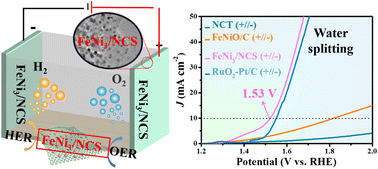
J. Mater. Chem. A, 2023,11, 14015-14024
https://doi.org/10.1039/D3TA01819A
About this collection
Journal of Materials Chemistry A is pleased to present this themed collection highlighting the rising stars of materials chemistry research in 2023. This special collection showcases the very best work from materials chemists in the early stages of their independent career.
Each contributor was recommended by experts in their fields as carrying out work with the potential to influence future directions in materials chemistry with applications in energy and sustainability. Congratulations to all the outstanding researchers featured!
See also:
Journal of Materials Chemistry B Emerging Investigators 2023
Journal of Materials Chemistry C Emerging Investigators 2023